Cities like Istanbul stand alternatively as testaments to humanity’s sustained success and survival and to its limitless culture of waste and forgetfulness. While Newton stood upon the soldiers of giants to attain his greatness, modern Istanbul lies upon the compost of giants. Beneath the floor of hotels, nargile cafes, döner stands, and tourist traps lay a foundation of Roman palaces, forums, cisterns dating from as far back as the 4th century. In places beneath that, in underground Istanbul, would lie still more ruins dating to pre-classical times.
Recently, I had a chance to visit some of these hidden places thanks to the efforts of the Friends of American Research Institute Turkey, which is an organization supporting the work of various researchers (not only American) in the region. They periodically organize regional tours led by some of the world’s most respected names in art history and archaeology. This particular tour of underground Istanbul was one I had waited almost 5 years to attend, ever since I first learned of it by word-of-mouth from other long-time North American expats. Unsurprisingly, underground Istanbul was one of their most popular tours and available seats were hard to come by. I was excited to finally have the chance to join this year and then even more excited to learn that our guide would be Dr. Ferudun Özgümüş. A life time ago, I saw him featured in the Istanbul-focused episode of History Channel series “Cities of the Underworld”.
Every square foot of the old city has been inhabited and utilized in one fashion or another for nearly two thousand years. Unlike Rome, Istanbul never lost its regional preeminence as a center of power. Perhaps this is why there was never an extended lull in building and generation that allowed for generations to appreciate more fully the value of forgotten history lying before them. Instead, to this day one can find modern construction taking place on top of the very stonework of history.
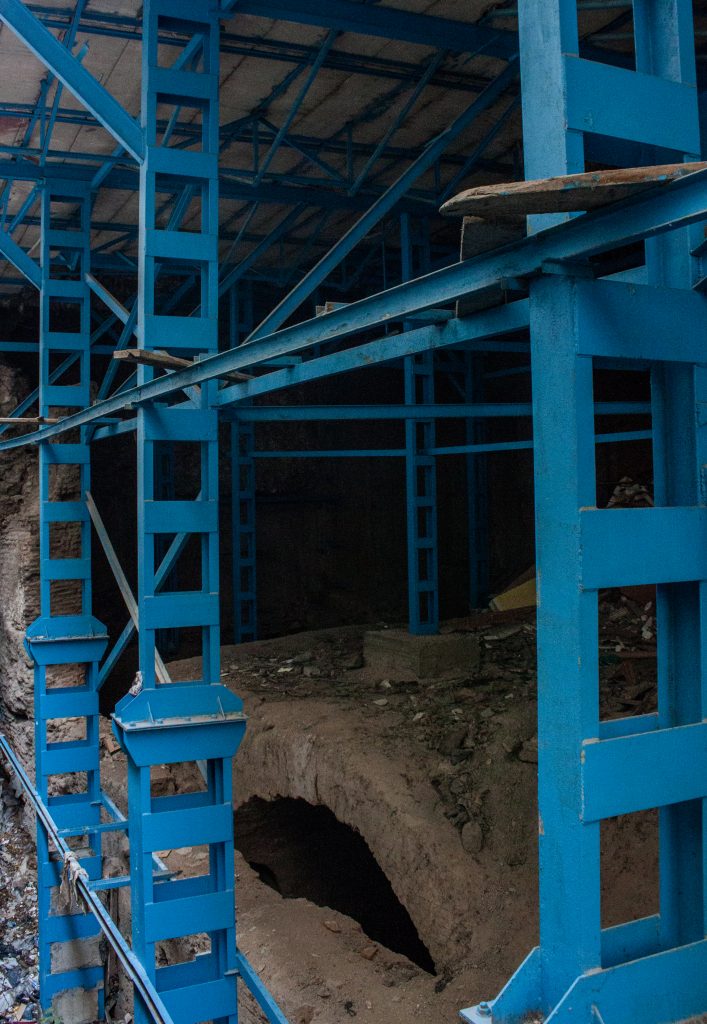
Beneath modern buildings thrown up haphazardly and illegally, ancient substructures serves as useful dumps for building refuse. These are surreal scenes where torrents of bottles, concrete chips, and candy wrappers flow like rain down channels designed by 4th century architectures to keep dry the heads of emperors.
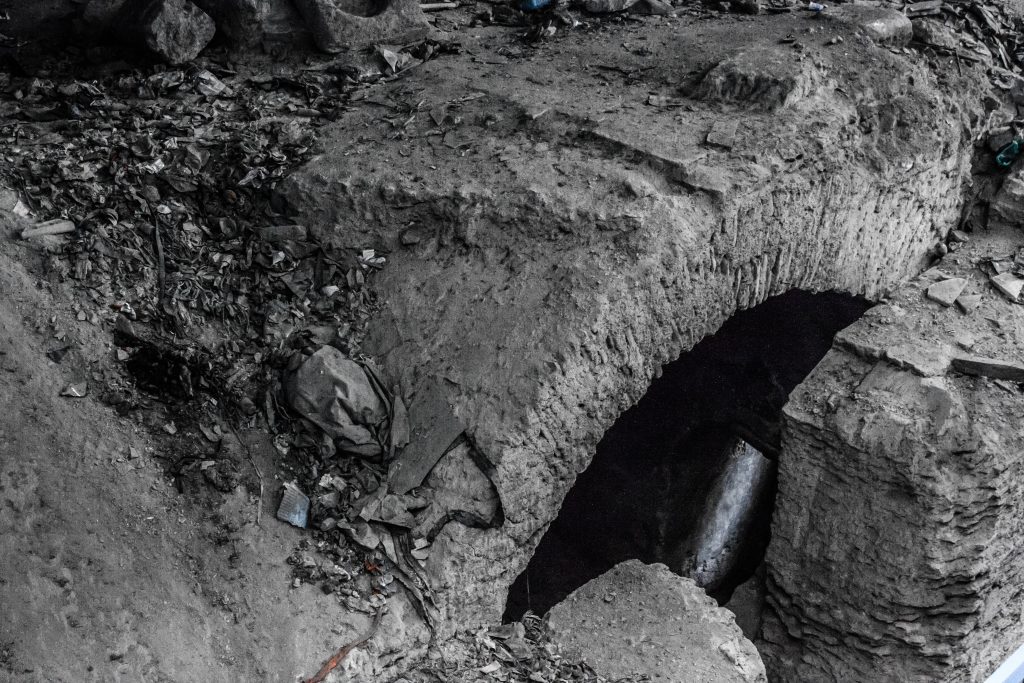
It says something of the times we live in when hotels and carpet shops serve as the most faithful protectors of these vulnerable locations. To them, they represent an opportunity to draw in foreigners easily impressed by superficially fetishized antiquity. In the basement bar of a small little hotel is the city’s best preserved example of a turn of the first millennia Roman forum, repurposed by later centuries as a cistern.
In the life cycle of structures, one may first think of the religious temples converted over time by one conquering religion to another. More common are examples like this former forum-come-cistern, now a contemporary art gallery and hotel bar. Oh, to have been a petrified fly on the wall here over the last eighteen hundreds years. How do the centuries compare?
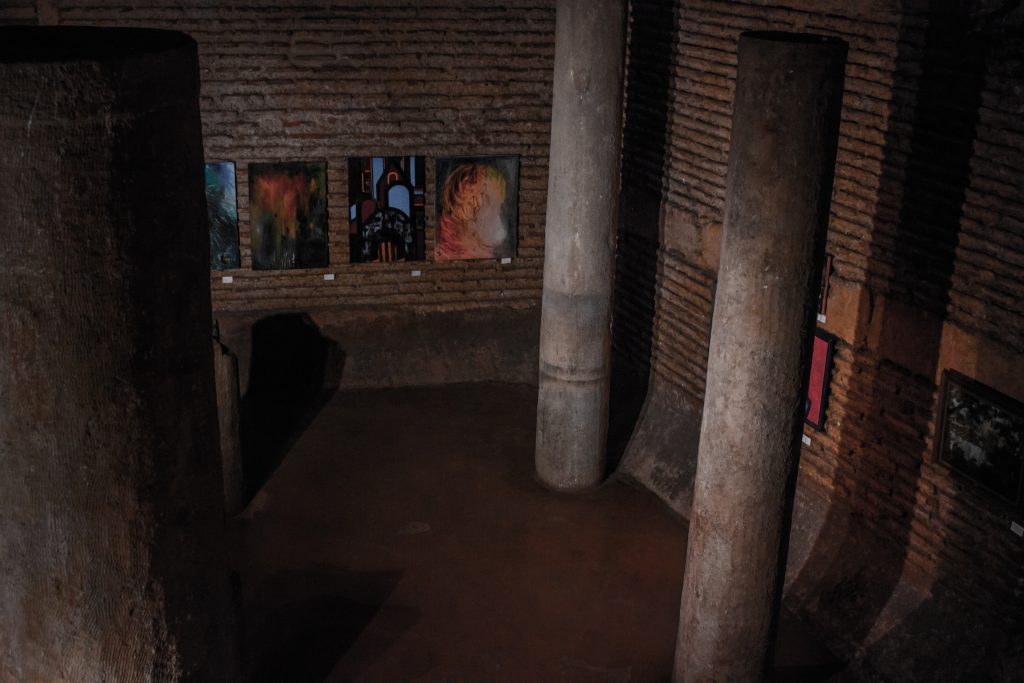
At least the Antik Hotel takes better care of its relic basement. The open cave beneath the backroom of Kirkut Rugs features a truly abandoned first-millennia church dedicated to Mary. All that remains accessible is its still-functioning agiasmos, ruined and crumbling. From its mosaic, Mary’s one good eye stares out eternally into the darkness.
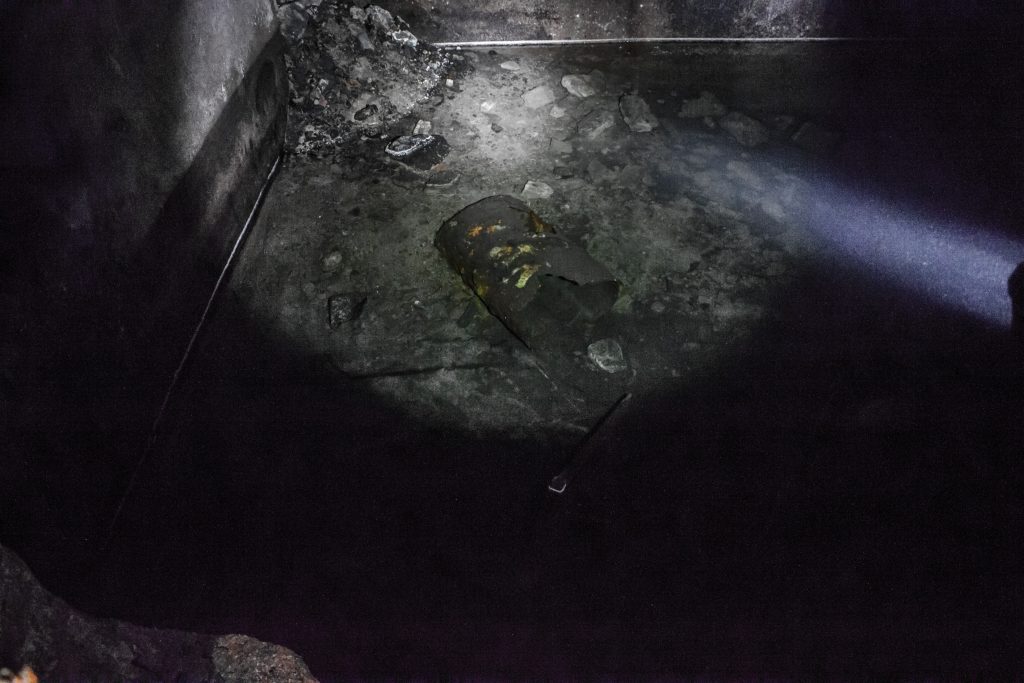
Beneath just another nargile shop in Sultanahmet lies an empty room that once formed the central portion of another church, now accessible only by ladder and used to store tobacco and other equipment.
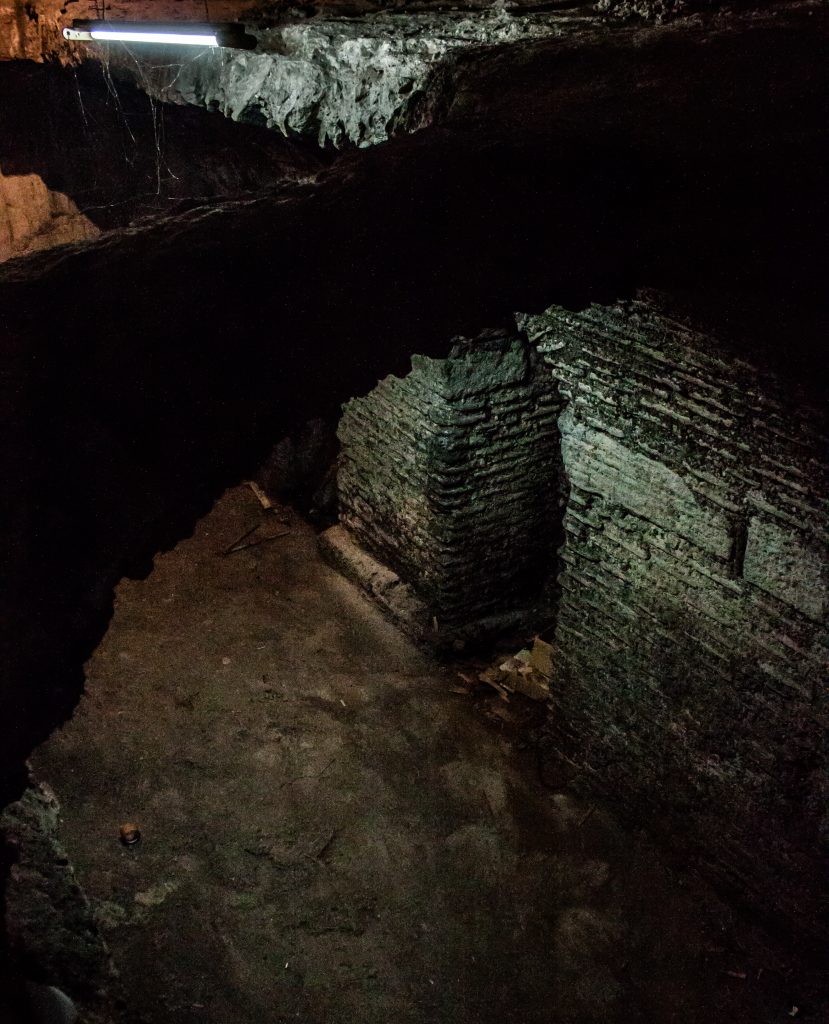
A few fluorescent lights illuminate a well preserved structure that, while known, is beyond reach of researchers. In addition to a lack of funding, shop owners and current residents often form a formidable barrier to active research. Discoveries of still standing archaeological ruins are often no discovery at all to local residents, who grow up quite actually residing with ancient sub-structures. Many local land owners perhaps rightly fear that reporting these structures will lead authorities to confiscate their property, leading many to remain quiet or even explicitly block efforts to investigate. Researchers in old urban environments like this must tread cautiously and with great respect to history’s contemporary gatekeepers.
Across the street from the nargile shop, a small restaurant resides above the former bath of a Roman senator. Our guide was among those researchers who believed the structure belonged to a senator who was compelled to relocate to Constantinople when the Emperor Constantine relocated the capital from Rome. The political elites of one of the world’s greatest empires would’ve had to move their families and entourages to the wild hinterlands of this Nova Roma. Almost 1700 years later, this room is still providing hot water, albeit now a bit more mechanically.
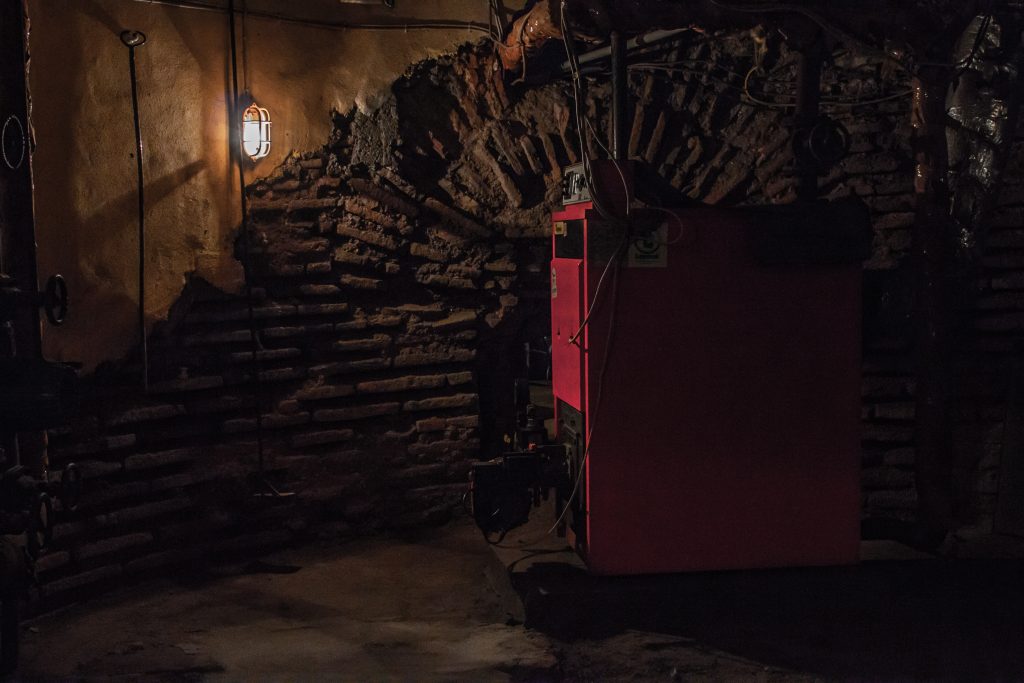
Not all the lost sites were lost so long ago. This is a portion of the Palace of Boukoleon, much of which still stands alongside the Marmara Sea. As recently as turn of the 20th century, it stood more or less structurally intact right along the water’s edge. Now it has been almost completely overbuilt by tourist structures and ramshackle shacks seeking to take pragmatic advantage of structures unvalued by local authorities and the public.
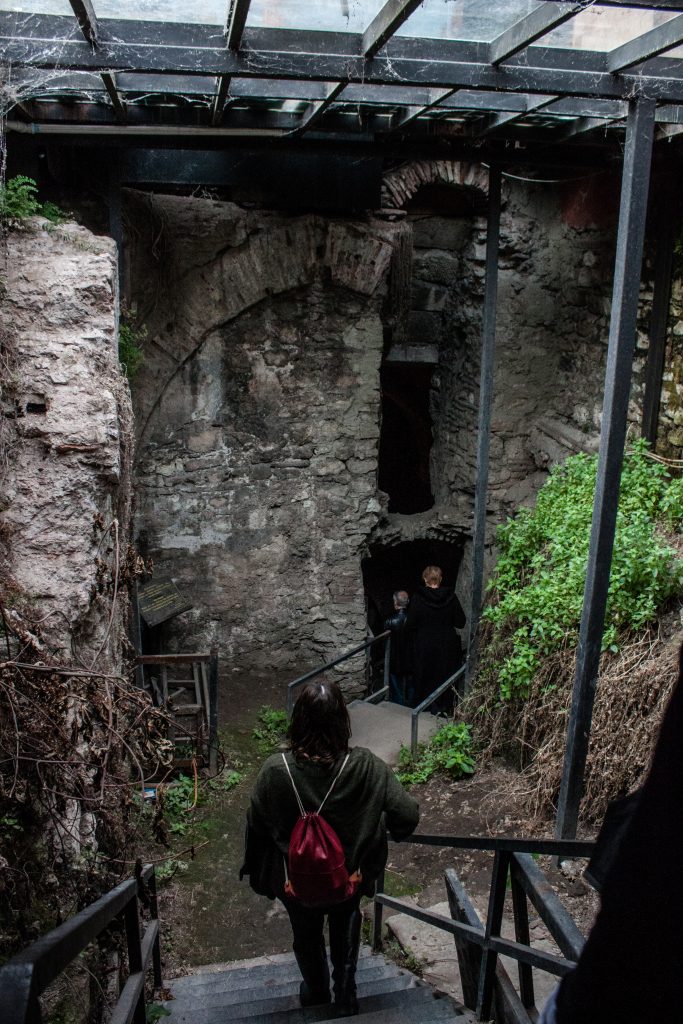
Our guide was one Doç.Dr.Ferudun Özgümüş, an original researcher of this particular site and one of the preeminent scholars working in the field of antique Istanbul. This site was one of the first major discoveries of his career, and it was with a mix of pride and regret that he retold the story of how sixty trucks of debris was removed and why entire chambers remain filled in and unstudied. Likely, 30 blocks of the local neighborhood are built directly on top of the still extant great palace of Constantinople.
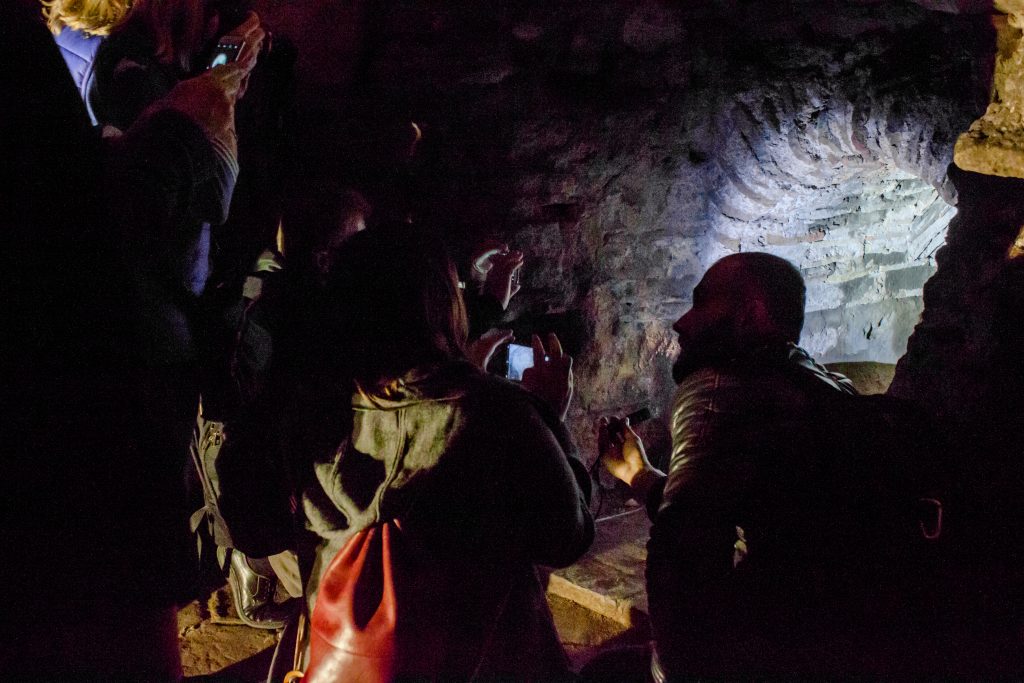
Finally, we came to the most impressive and depressing location, a palace still standing at street level. Marked by a distinctive typewriter-faced gorilla (most likely a clever riposte by local youths to the classic infinite monkeys with typewriters cliche), this barricaded ruin lies just meters behind Istanbul’s central post office. Gloomy and atmospheric, it’s what you imagine a more contemporary Indiana Jones would be creeping through (and may yet if the currently in-production Indy-5 catches up to the modern era).
Thousands, upon thousands, of old glass and plastic bottles litter the floor, and putrid water drips from the mossy ceiling. It was obvious that much of the refuse came from persons dumping bangs of garbage in the nearest repository that no one would object to. Oddly, it’s a bit surprising that street recycling gangs have not descended upon this place and hauled off its cloistered bounty.
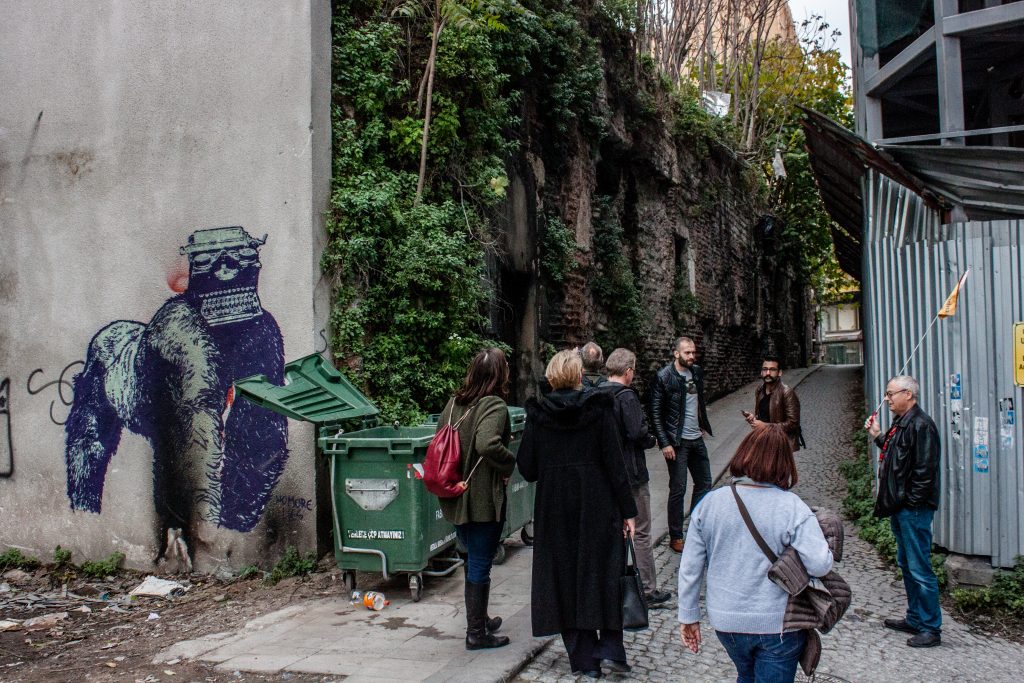
Surfaces not covered in glass are slick, slimy, and treacherous. While street-level rooms and corridors remain above water, most of the interior is in fact flooded like proper cave pools. I saw no fish, unfortunately, which indicates some form of palace monster had eaten them all and likely hungered for tourist meat.
Twenty minutes in places like these make for disorienting emergence back into the heart of old Istanbul. Steps we take here are likely to fall upon or besides places that would give us pause, if only we had time and wherewithal for it. Every day in this city, we walk over the spent lives of millions. Some were giants of history and some were not, but everything here stands where it does on their foundation.
Have you participated in this tour yet? Comment below and let us know your experiences!










Wow, that sounds like an awesome tour! I have seen one of these places (under a carpet shop) and was very impressed.
One little remark though: Newton stood on shoulders, not on soldiers of giants 😉